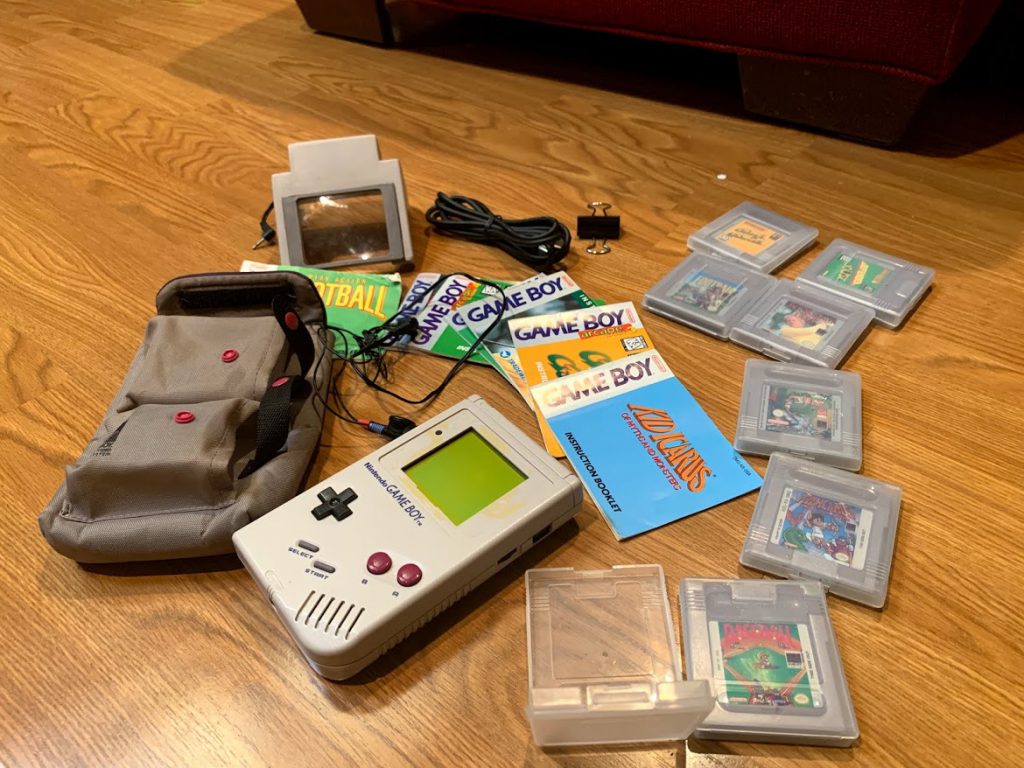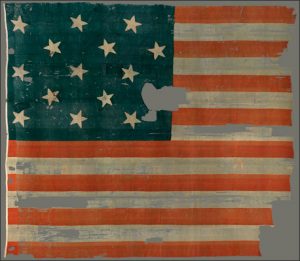Chances are that at one point or another in your life, you have heard of Nintendo. The company of Nintendo launched in Japan in 1889 as a card game company. However, Nintendo is now a video game company. As pinball machines gave way to electronic video games, the toy industry sought to take video games into the home with console games that plugged into televisions. The next step was to be able to take the game along for the ride. With that in mind, Nintendo created a gaming system then called the Game Boy.1
Gunpei Yokoi developed Nintendo Game Boy. The first version of the Nintendo Game Boy was made in 1989 and “offered a Z80 processor, a green LCD screen, and a gray hard-shell body.”2 The Nintendo Game Boy was one of the first handheld video game consoles. Roughly the size of a paperback book, the Game-boy utilized game cartridges and greyscale dot-matrix graphics.3 The Nintendo Game Boy was paired with a game called Tetris, a tile-based puzzle game, which made the Nintendo Game Boy an instant success.4 When the Nintendo Game Boy released in Japan, 300,000 units sold. A few months later, the Game Boy was released in the United States on July 31, 1989. The development of Nintendo Game Boy did not stop after its release, but the gaming unit went through many changes over a ten year period.5

While there were other handheld video game consoles on the market, the Game Boy was one of the first to feature interchangeable cartridges. Other handhelds only had one pre-installed game. In other words, if you wanted to play different games, you had to purchase separate consoles. My mother’s family talks about going on camping trips with the cousins’ football and baseball handheld video games, which was just about all there was at the time before the Game Boy. The Game Boy allowed the user to purchase one console and multiple (sometimes hundreds) of game cartridges. Not only was this a new idea, but it was a very profitable one as well.
Not only did Game Boy users purchase game cartridges, they also bought all sorts of accessories. Users needed cases to carry their console and cartridges. They purchased gadgets to magnify the screen. They also purchased gadgets to use the console in low light conditions due to no backlighting for the Game Boy. And, of course, users sought to upgrade to the next best console as Nintendo continued to develop new products.
One of the many modifications to the Nintendo Game Boy was the Mini-Arcade. The Mini-Arcade turned a user’s Game Boy into a table top game. It included a miniaturized version of the joystick which was used in other standard gaming consoles.6 The Mini-Arcade addition made the Nintendo Game Boy something that people could use as a table top game if the user so desired.
Another modification that the Nintendo Game Boy has gone through is having different colors of casing. By 1995, users had a choice of body colors for their Nintendo Game Boys.7 One option included the “Play It Loud” colors. Play It Loud was a campaign that showed different colors they offered for the Game Boy. The different colors that “Play It Loud! units were manufactured were red, green, black, yellow, white, blue, and clear.”8 The clear or transparent Game Boy, sometimes called X-Ray, could be found in the UK during this time. One source describes, “The most common Game Boy colors included yellow, red, clear and black. The Green Game Boy were fairly scarce but blue and white are the rarest.”9 There were other accessories that Nintendo put out such as a printer and a camera in 1995. They also toyed around with a 16-bit version the same year the printer and camera accessories were out and considered making a touch pad adapter three years after.10
A third revision to the Nintendo Game Boy was the Game Boy Pocket, which was released on July 21, 1996. The Game Boy Pocket boasted a version that was smaller and lighter when compared to the original Game Boy. Advertisements highlighted the fact that this console could fit in your pocket. Another advantage of the console was that the gaming cartridges were interchangeable with the original Game Boy. Unlike the original Game Boy, which required 4 AA batteries to function, the Game Boy Pocket only required 2 AAA batteries to function. While the Game Boy Pocket required fewer batteries to function, it could only provide the user of the console with about ten hours of game play compared to the original Nintendo Game Boy which yielded about fifteen hours of game play.11 With the Nintendo’s many revisions and iterations such as the Game Boy Pocket and Game boy Color, the Game Boy sold over 118 million units worldwide.12

Another revision was the Game Boy Light, released in Japan on April 14, 1998, which was only available in Japan. The Game Boy Light was a console that was slightly bigger than the Game Boy Pocket. The Game Boy Light offered a feature that the previous versions of the Game Boy did not have which was “an electroluminescent back light for low-light conditions.”13 The Game Boy Light requires 2 AA batteries to function providing the user of the console with about twenty hours of game play without the electroluminescent back light on and twelve hours of game play with the electroluminescent back light on. The Game Boy Light had two standard colors, gold and silver. It also has “numerous special editions, including an Astro Boy edition…, an Osamu Tezuka World edition with a clear red case and a picture of his characters, and a solid yellow Pokemon Center Tokyo version.”14
The Game Boy Color is yet another version of the Game Boy, which was released in Japan on October 21, 1998, and a month later, it hit the international markets. Compared to the other versions of the Nintendo Game Boy the Game Boy Color had a screen that could display images in color. Unlike the Game Boy Light, which had a electroluminesent back light to use in low-light conditions, the Game Boy Color did not have one. The Game Boy Color required 2 AA batteries for providing the user with 10 hours of game play. The Game Boy Color also utilized backwards compatibility, featuring the ability to play gaming cartridges originally developed for the original Game Boy and Game Boy Pocket. Unique colors of this version of the Game Boy included berry (fuchsia), grape (purple), kiwi (neon green), dandelion (yellow), and teal. Two other options sold at the same time were called Atomic Purple, which was a translucent purple color, and Neotones Ice which was a clear casing that was only sold in Japan. The original Game Boy and the Game Boy Color sold about 118 millions unit worldwide.15

The Game Boy Advanced SP was yet another version of this system, and it was released in February 2003. The Game Boy Advanced SP included a screen that could show pictures in color, a front light which could be used in low light conditions, and a clam shell design to protect the screen from getting damaged or dirty. The clam shell design was also used in the Nintendo DS, which was released in November 2004. The Game Boy SP had a rechargeable battery, which took three hours to recharge, provided the user with 18 hours of gameplay without the light on and 10 hours of gameplay with the light on. Compared to the other Game Boy consoles that came before it, the consoles that came after the Game Boy Advanced SP had better, more colorful graphics, gaming mechanics were made more complex by adding voice control and touch screen, and games with more moving parts could be more easily covered.16
The Nintendo Game Boy was not the only handheld gaming console to accommodate various game cartridges, but it was by far the most popular and longest lasting. Atari and Sega both introduced handheld consoles, but they were not able to innovate to the level that Nintendo could. Nintendo continues to dominate the world of the full-size video game industry while incorporating online gaming. While handheld consoles are not as popular due to the proliferation of smartphones, the Game Boy influenced app-based games and ingrained the idea that we can take the game with us.
- “Nintendo of America Inc.,” in Company Profiles for Students, edited by Donna Craft and Amanda Quick, Vol. 2. (Detroit, MI: Gale, 1999)950-954. ↵
- Elizabeth Rholetter Purdy, “Gameboy,” in St. James Encyclopedia of Popular Culture, 2nd ed., edited by Thomas Riggs, Vol. 2. (Detroit, MI: St. James Press, 2013), 420. ↵
- “Nintendo of America Inc.,” In Company Profiles for Students, edited by Donna Craft and Amanda Quick, 950-954, Vol. 2. Detroit, MI: Gale, 1999. ↵
- Roberto Dillon, The Golden Age of Video Games: The Birth of a Multi-Billion Dollar Industry (Boca Raton, Fla. : A K Peters/CRC Press, 2011), 164-165. ↵
- Wikipedia, 2019, s. v. “Game Boy,” https://en.wikipedia.org/wiki/Game_Boy. ↵
- Elizabeth Rholetter Purdy, “Gameboy,” In St. James Encyclopedia of Popular Culture, 2nd ed., edited by Thomas Riggs, 420. ↵
- Elizabeth Rholetter Purdy, “Gameboy,” In St. James Encyclopedia of Popular Culture, 2nd ed., edited by Thomas Riggs, 420. ↵
- Wikipedia, 2019, s. v. “Game Boy,” https://en.wikipedia.org/wiki/Game_Boy. ↵
- Wikipedia, 2019, s. v. “Game Boy,” https://en.wikipedia.org/wiki/Game_Boy. ↵
- Jeff Ryan, Super Mario: How Nintendo Conquered America (New York: Penguin, 2011), 207-208. ↵
- Wikipedia, 2019, s. v. “Game Boy,” https://en.wikipedia.org/wiki/Game_Boy. ↵
- Roberto Dillon, The Golden Age of Video Games: The Birth of a Multi-Billion Dollar Industry (Boca Raton, Fla.: A K Peters/CRC Press, 2011), 164-165. ↵
- Wikipedia, 2019, s. v. “Game Boy,” https://en.wikipedia.org/wiki/Game_Boy. ↵
- Wikipedia, 2019, s. v. “Game Boy,” https://en.wikipedia.org/wiki/Game_Boy. ↵
- Wikipedia, 2019, s. v. “Game Boy Color,” https://en.wikipedia.org/wiki/Game_Boy_Color. ↵
- Wikipedia, 2019, s. v. “Game Boy Advanced SP,” https://en.wikipedia.org/wiki/Game_Boy_Advance_SP ↵



41 comments
Iris Reyna
Great job on the article it was very informative and interesting. I’m not much of a gamer but my entire family is. The only Nintendo I owned was the Nintendo DS and I remember having so much fun during my childhood with it. Seeing the different styles of the Game Boys that have existed over the years was cool. My family owns a couple of the older Game Boys but one I’ve never seen before was the Game Boy Advanced SP even though it’s very similar to the Nintendo DS it’s just slightly smaller. And being able to read about all the different components that came to make a game boy was fascinating because all those components went into such a small object to create and set the path, as I see it, for all future gaming.
Jacob Anthony Ayala
I thought this was a really fun article read. Learning more about the Game Boy and its impact on video games. By being the first handheld gaming system. I love how it didn’t stop by impacting how Nintendo makes handheld games but how it also influences smartphones. The Game Boy really planted that seed for handheld games on the go.
Enrico Zorzin Onzi
Hello Elizabeth. The article is well written and provides reliable information about the history behind the creation of the Nintendo game boy. In my opinion, the development of the Nintendo was revolutionary. I am a fan of video games and the perspective that Gunpei Yokoi created changed this field forever. It is nice to know that people have been working on video games since a long time ago. I am sure that the development of Nintendo game boy was a good influence helping engineers to develop even more technological video games.
Jordan Davenport
I am a huge fan of video games, and this article made me happy. A fantastic overview of the history of Nintendo and their popular gameboy. This article brought back memories of my childhood, playing on my gameboy advanced, and it is crazy how far video games have come since then, I have and absolutely enjoy Nintendo’s latest device, the Nintendo switch.
Ben Kruck
This is such a cool article! I have always loved Nintendo while growing up and still do, I knew the Gameboy has successful, but I didn’t know it just how successful it actually was. I actually got a used Gameboy Advance SP about six years ago and I still play it to this day. I liked that in the article, you not only covered just the Gameboy, but you also covered how it evolved as well.
Alex Trevino
As someone who grew up with and still owns a Gameboy advanced sp, I never knew that the machine was released in the same year I was born. I thought that it was created in the late 1990s along with its predecessors, however, I found this article as a very clear wake-up call, that the toy itself was not all that old, and was in fact as old as myself. I found the entirety of this article to be incredibly informative, as I knew of the other consoles that came before the Gameboy advanced sp, but did not know the order in which they were released. I love everything regarding retro technology, whether it be game consoles, cameras, or computers, and as such, this article was well researched, assembled, and overall a great read for anyone else who shows interest in those topics.
Phylisha Liscano
This article was interesting to read and it is very cool to learn about how The Nintendo game boy evolved. it was very cool how The Nintendo game boy started off very small and then went into much more and eventually became advanced.
Eliana Villarreal
This was quite an interesting and informative read. I honestly did not know there were so many version of the Game Boy that were produced. I mainly remember the Game Boy Advanced SP because I know while I was growing up, my cousins both had those versions and they would take it everywhere as they had become quite obsessed with them at the time. It is neat seeing how it was transformed over time with slight modifications to make entertain people for longer periods of time with little reasons to not use it, such as the lighting concerns. It is crazy how technology has developed over time, but it definitely a growing industry with an unknown future. Great job!
Kimberly Rivera
As someone who still own a Gameboy and several cartilages (games) It’s interesting how it went evolving as the technology industry went creating modern technology and features. I love how it started off as something small and has now become an impacting moment in the creation of gaming consoles. I love how the article went into the details of the gameboy and pointed out the differences of the different versions of it.
Maria Ferrer
It is incredible how technology started a long time ago and was used to create handheld video games. It was interesting to read how people went from the Nintendo Game Boy the size of a paperback book with just a single game to a Game Boy Advanced SP with more colorful graphics, complex machines with voice control, touch screen, and games with more moving parts. I like how the author started the article by describing the first video game and how it evolved over time.